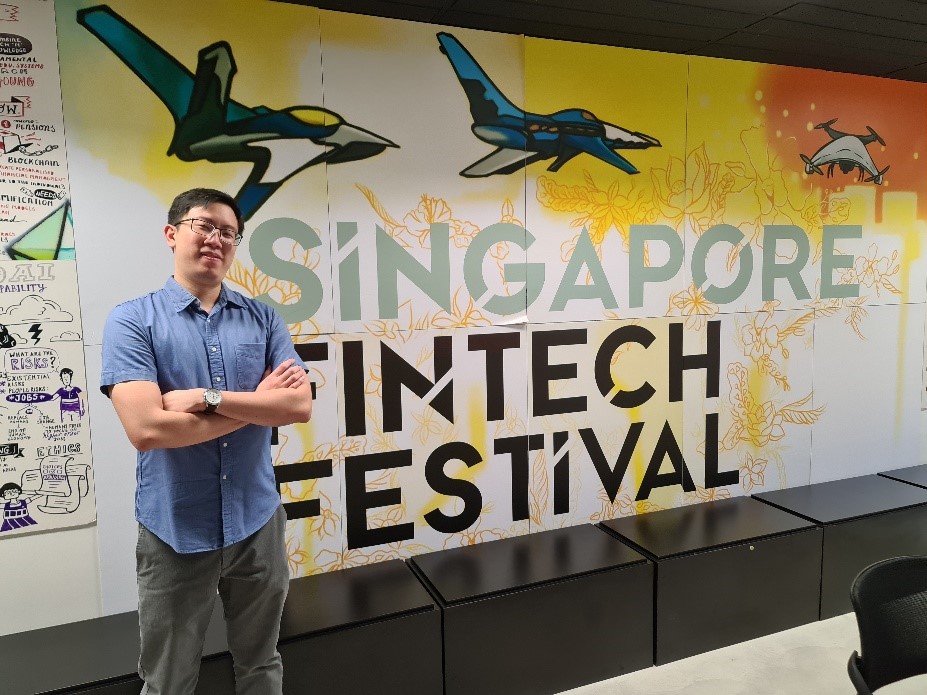
Sean CHUA
AI & Data Analytics Intern
(January 2021 – July 2021)
I never intended to take up an internship during my Master’s programme in SMU, since I already had four years of working experience. However, one day I received an email in my school inbox that changed my mind. Veronica from the Postgraduate Career Services personally reached out to me about an opportunity that fit my skillset and experience, and it would be the first Master’s level internship offered by the Monetary Authority of Singapore! I was curious to apply my new skills from SMU’s MITB programme, so I enquired more about the internship opportunity.
By this time, the pandemic and its related lockdowns were in full force. I had a few virtual meetings with Veronica to better understand this 6 month commitment, and to brush up my resume and interview skills as well. With the necessary preparations under my belt, I finally met Xuchun during the virtual MAS interview, who is the Head of AI Development Office from the Fintech and Innovation Group. Although I was initially intimidated, the conversation flowed smoothly with a few jokes along the way. If accepted, I would be put to work on an open-source project to boost the adoption of Artificial Intelligence across Singapore’s financial industry. Imagine that! I was excited to make such a large impact and work directly with MAS at the highest level.
It wasn’t too long before the internship offer came in, and I readily accepted the chance. The 6 month internship period would intersect my second and third semesters, so I reached out to Veronica once more on choosing my modules carefully for an acceptable workload and exam schedule. I was a little apprehensive going in without any direct experience in the financial industry, which I was upfront about during my MAS interview. Fortunately, I was relieved to learn that my fellow chosen intern Po-Liang was also from the MITB programme like me, but from the Finance track alongside my Artificial Intelligence track, who would help support my learning journey and vice versa.
Following our kickoff meeting with Xuchun, we learned that this project would be extremely heavy on coding, since we were tasked to create an entire end-to-end pipeline from scratch. There was no established code repository from MAS to reference, and this project would be its first Git publication. As a very simple summary: the starting end takes the input S&P500 stock price data from Yahoo Finance API, and the finishing end outputs the necessary portfolio actions (buy/sell) and your final portfolio value versus the S&P500 index. There were many more outputs along the way; such as Alpha analyses, stock price predictions, sensitivity analysis and more.
There were several immediate challenges to this. Foremost, my fellow intern had no prior coding experience, so I had the primary responsibility of maintaining the Git code repository and code quality checks before pushing it into production. Along the way, I would mentor him on how to code, introducing him to proper code tools and industry best practices.
Thankfully, it was easy to work with Xuchun for the project management. He had a flexible working style that allowed us to set milestones together, discuss work items, prioritisation, and deadlines. In fact, when we let Xuchun know about our exam dates, we were pleasantly surprised and grateful when he reduced our internship workloads during those weeks!
The first few weeks were rough, since I had to quickly pick up the necessary financial concepts to better understand the scope of the project. With help from Xuchun and Po-liang, I was able to overcome this limitation, gaining a deeper appreciation of many financial concepts. One incident in particular stood out to me – I was presenting my XGBoost model’s predictions of returns and ranking for our selected basket of stocks, with the relevant Data Science indicators of precision@k, recall@k and so on. Xuchun then interjected that these metrics were not needed, since our target audience would only care about financial metrics like Maximum Drawdown and Calmar ratio! That’s when I understood that for this open-source tool, Data Science was only the support, while financial concepts and metrics should take the centre stage to match our target audience.
Over these 6 months, I felt validated when applying MITB’s coursework to this project. After all, what are academic learnings without application to real life problems to produce business value? We chose a simple XGBoost model, but layered the SHAP library and analyses on top of it for model explainability to our users. I had learned the concepts during the semester, but this would be my first hands-on application for SHAP explainability, so this code implementation was an enriching experience. Supplying and using various Cross Validation methods would be another example of coursework application, and once again my learnings were further supplemented by Xuchun’s references to several published papers.
Overall, I had a great experience with this MAS internship as facilitated by SMU MITB. We had a wrap-up session at the end of our internship, where Xuchun gave me personal feedback and good career advice. I still have a semester of school left to fulfil, and will definitely keep a lookout for careers in Singapore’s finance industry. I am grateful for this internship for giving me a boost in that direction, and I will be keeping in contact with Xuchun for any career opportunities as well.


